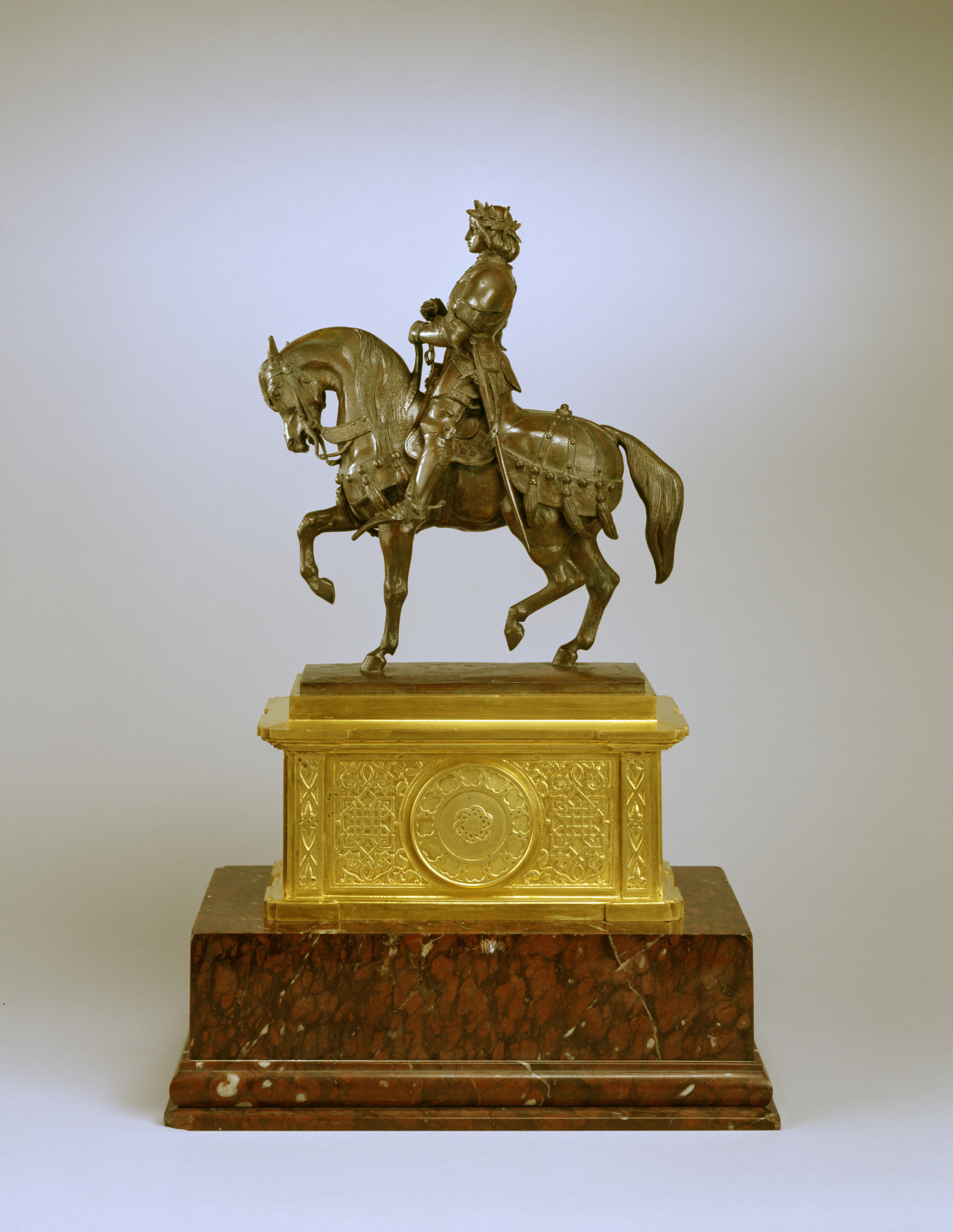Charles VII, the Victorious
(18th and 19th Centuries )
After French forces led by Joan of Arc lifted the siege of Orléans in 1429, Charles (1403-61) was crowned king of France in Reims Cathedral. Although he failed to prevent Joan of Arc from being burnt at the stake, Charles VII succeeded in expelling the English occupiers from Normandy after the Battle of Formigny in 1450 and from Guyenne the following year, thereby establishing the boundaries of France.
Charles appears as a youth mounted on a small horse and wearing armor and a laurel wreath symbolizing victory. The statuette is mounted on a gilt-bronze socle, or base, decorated with Gothic interlace designs.
Inscription
Provenance
Provenance (from the French provenir, 'to come from/forth') is the chronology of the ownership, custody, or location of a historical object. Learn more about provenance at the Walters.
William T. Walters, Baltimore, June 27, 1866, by purchase [George A. Lucas as agent]; Henry Walters, Baltimore, 1894, by inheritance; Walters Art Museum, 1931, by bequest.
Exhibitions
| 2007-2008 | Untamed: The Art of Antoine-Louis Barye. The Walters Art Museum, Baltimore; Philbrook Museum of Art, Tulsa; The Henry Morrison Flagler Museum, Palm Beach. |
| 1979 | A Baltimorean in Paris: George A. Lucas, 1860-1909. The Walters Art Gallery, Baltimore. |
| 1967 | An Exhibition of the Treasures of The Walters Art Gallery. The Walters Art Museum, Baltimore; Smith College Museum of Art, Northampton; Pace Wildenstein Gallery, New York. |
| 1889-1890 | The Works of Antoine-Louis Barye. American Art Gallery (New York), New York. |
Geographies
France, Paris (Place of Origin)
Measurements
20 3/4 x 13 5/8 x 7 7/8 in. (52.71 x 34.61 x 20 cm)
Credit Line
Acquired by William T. Walters, 1866
Location in Museum
Not on view
Accession Number
In libraries, galleries, museums, and archives, an accession number is a unique identifier assigned to each object in the collection.
In libraries, galleries, museums, and archives, an accession number is a unique identifier assigned to each object in the collection.
27.164





